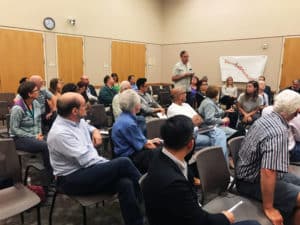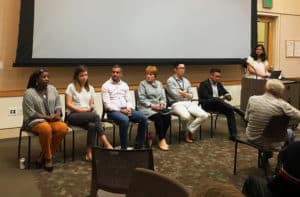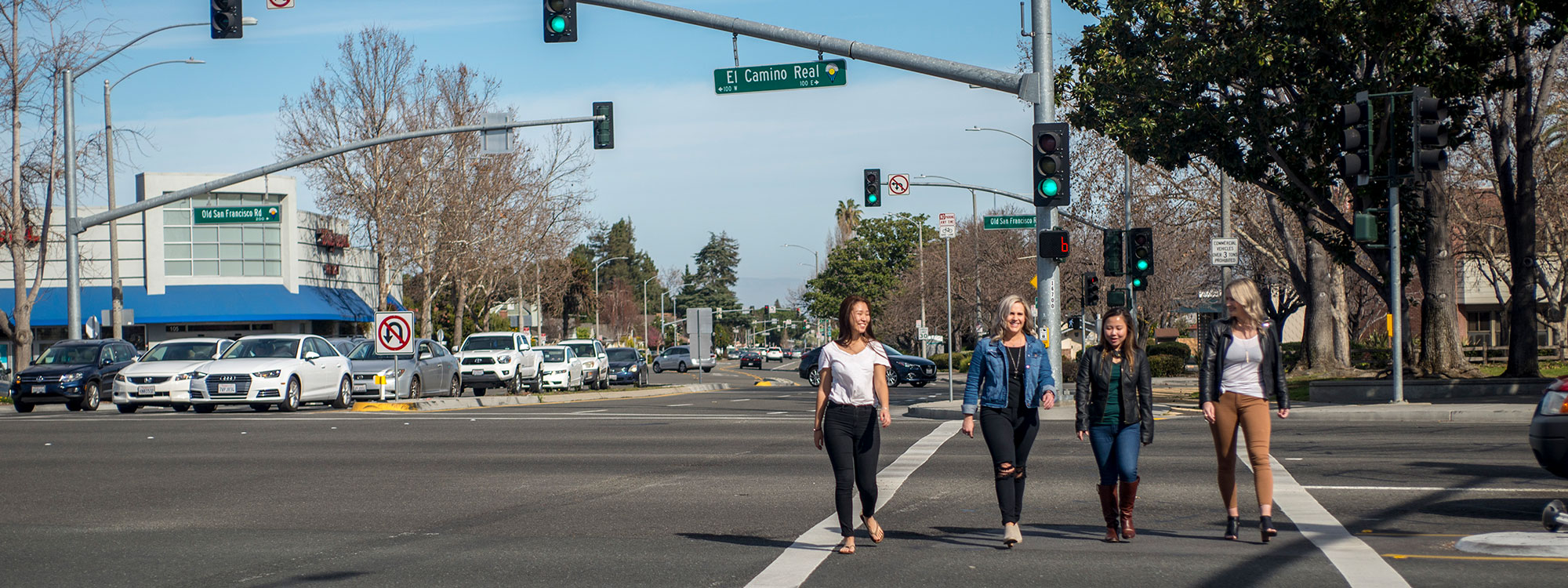On September 5, 2019, Greenbelt Alliance, Santa Clara Community Advocates (SCCA), and Livable Sunnyvale engaged more than 40 members of the public in a discussion on the future of El Camino Real in an educational event with presentations from local experts and a Q&A panel.
El Camino Real is a 43-mile roadway that extends from San Jose to Daly City. This corridor acts as a central artery for many residential areas and businesses within South Bay communities. Greenbelt Alliance envisions El Camino Real as an opportunity to encourage a mix of new homes and businesses in the right spaces to ease development pressure on our region’s open spaces. Building in infill areas like that of the El Camino Real corridor mitigates sprawl pressure on nearby farms, ranches, and watersheds, protecting the Bay Area’s iconic natural resources. We are a long-standing coalition partner of both Santa Clara Community Advocates and Livable Sunnyvale who are dedicated to building safe, diverse neighborhoods. Our coalition’s policy platforms encourage sustainable and inclusive communities, with jobs closer to homes, exploring options for transit-friendly living, and vibrant and walkable streetscapes.
Livable Sunnyvale and Santa Clara Community Advocates worked together to create a space for community input and collaboration with city officials at the “Envisioning El Camino Real” event. This educational event, sponsored by Greenbelt Alliance, featured speakers who presented practical ideas of smart growth pertinent to El Camino Real.

The City of Sunnyvale is expecting to release their draft plan and Environmental Impact Report (EIR) for its portion of El Camino Real later this fall, with an adoption of a final EIR in early spring of 2020. Santa Clara is expecting their draft to be completed in the winter of 2020. The community will have the opportunity to review and comment on the draft EIRs from both cities.
In preparation for this release, local experts were able to share their own perspectives on the future of El Camino, highlighting strategies of sustainable transportation, affordability, and an efficient city design into future development plans.
LaShonda Kennedy, Vice Chair of the Redwood City Transportation Advisory Committee, and Gwen Buckley, planner for SamTrans and representative of the Grand Boulevard Initiative, each discussed how a corridor dominated by auto-oriented design could be transformed into people-centered places, with streetscape elements that include wider roads, higher visibility crosswalks, and protected bike lanes. They shared the positive feedback received on trial projects such as pop-up protected bikeways on El Camino, where installations of cones and temporary planters proved to be a practical way to give residents an idea of the look and feel of a protected bike lane along the corridor.
Steve Le, an Assistant Planner with the City of Santa Clara and Jay Lee, a Senior Planner with the City of Sunnyvale, shared updates on the plans and answered residents’ questions on how the neighboring cities interact and cooperate. Both plans’ objectives will likely increase density through building design, yet take into consideration building heights of the surrounding neighborhoods with the goal of turning El Camino Real into a mixed-use, multi-modal transit corridor. They also shared that they will be working closely with citizen advisory committees for direct input once the draft EIR’s are released.

Vikas Gupta, a member of Santa Clara Community Advocates and Sue Serrone, the Chair of Livable Sunnyvale, shared their advocacy experiences and encouraged attendees to get involved in their communities’ decision making processes.
Later in the evening, community members participated in small group discussions to share what they value most about their community. Many expressed an interest in making the El Camino Real corridor more attractive for pedestrians to use. This would include having walkable, cyclist centric, and public transit-oriented areas for people who live and work in the community.
Nikita Sinha, Walk San Jose Program Manager from CalWalks, moderated a panel Q&A discussion. There was great support for improving the safety of cyclists and pedestrians, and questions on how both Sunnyvale and Santa Clara plan to build homes to accommodate the growing workforce. Panelists encouraged community members to stay involved by joining citizen action committees, writing comment letters, showing up to workshops and events, and most importantly, connecting with city staff and officials.
To learn more about these Specific Plans, or to find out how you can work with Livable Sunnyvale and Santa Clara Community Advocates, please contact Kiyomi Honda Yamamoto, South Bay Regional Representative.
This post was co-written by South Bay Regional Representative Kiyomi Honda Yamamoto and Intern Maddi Gibson.
Featured Photo: Timothy Kozono ©




